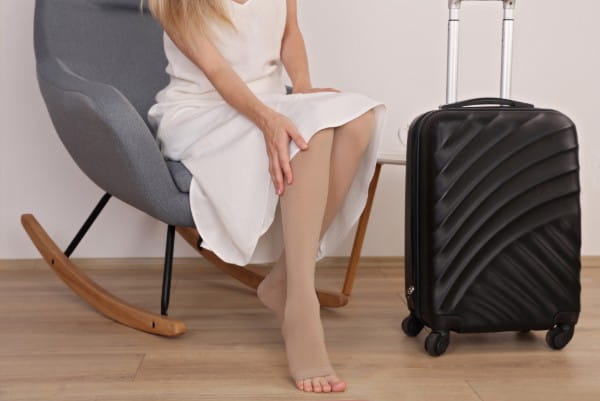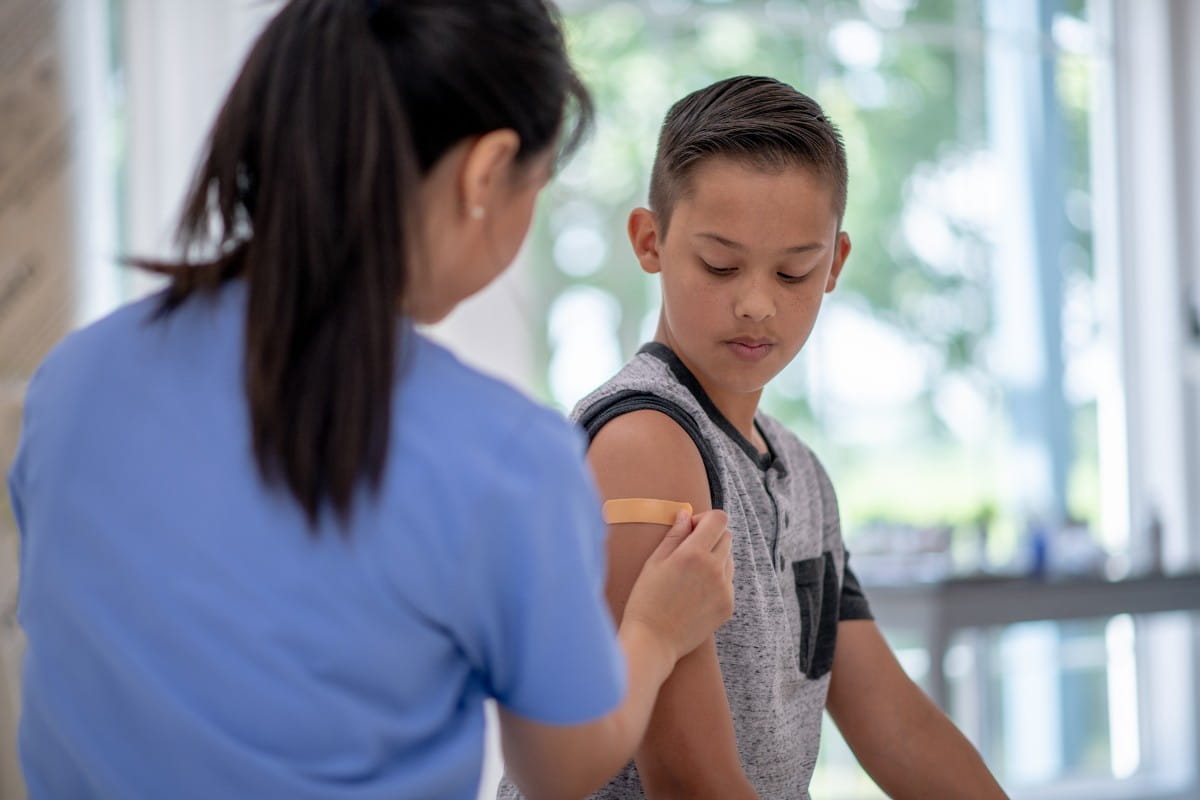What compression socks do?
Socks can do more than keep your feet warm and dry — specialized socks can improve and prevent many health conditions.
Compression socks – or compression stockings – are specialized socks that apply gentle pressure to your legs and ankles. They can help improve blood flow from your legs to your heart.
“Compression socks have also been shown to help decrease swelling and pain in the legs and ankles,” explains a Riverside provider. “By applying pressure to the legs, they reduce the extra fluid in the legs, reduce inflammation, and ultimately improve blood flow through the veins to the heart.
Compression socks basics
You can purchase compression socks at most pharmacies, big box stores and many online retailers. Depending on the type of compression sock that’s right for you, you may need a doctor’s prescription and/or professional fitting for maximum results.
There are three main types of compression socks or stockings:
- Graduated compression stockings: With this type of compression stocking, the compression is strongest at the ankle and decreases up toward the knee. If you have peripheral edema or orthostatic hypotension, your doctor may recommend this type. In fact, graduated compression stockings generally require a doctor’s prescription and professional fitting.
- Anti-embolism stockings: This type of stocking also features graduated compression that decreases from the ankle upwards, but it is used for people who are not mobile. “Anti-embolism stockings can help reduce the chances of developing deep vein thrombosis,” says a Riverside provider. Anti-embolism stockings also generally require a doctor’s prescription and professional fitting.
- Nonmedical support hosiery: This type of compression stocking does not require a prescription and is available at most pharmacies. Support hosiery offers the same level of compression throughout the stocking and can provide relief for tired, achy legs.
Who could benefit from wearing compression socks?
Compression socks can be beneficial for many conditions. Your doctor may recommend you wear compression socks for:
- Boosting circulation in the legs
- Decreasing swelling in the legs and ankles
- Improving lymphatic drainage
- Managing orthostatic hypotension, or low blood pressure when you stand up after a period of sitting down
- Preventing blood from pooling in the leg veins
- Preventing deep vein thrombosis in the legs
- Preventing venous ulcers
- Reducing pain related to varicose veins
- Reversing venous hypertension
Compression socks can be useful for other situations, too:
- Athletes sometimes wear compression socks on their arms or hands to help improve blood flow and oxygen delivery while they’re working out, practicing or during competition. Some athletes also wear compression wraps to help speed up their post-workout recovery.
- For someone who is confined to a wheelchair, compression socks can help improve blood flow and reduce swelling in the legs.
- Pregnant women who are prone to swelling in their legs, feet or ankles may want to wear compression stockings to reduce chances of swelling. Most pregnant women see the best results with compression socks when they put them on in the morning as a preventative measure, versus putting them on after they’ve developed swelling.
- Airplane passengers or crew on long or frequent air flights may want to wear compression socks to help increase circulation and reduce their risk of developing deep vein thrombosis or blood clots.
- For people on their feet all day at work, compression socks can help reduce fatigue, pain or swelling by increasing blood and oxygen flow in the legs and feet.
Tips for wearing compression socks
Putting compression socks on
If you wear compression stockings, you should put on your compression socks or stockings just like any other socks – starting with pulling it over your foot and unrolling up your leg. If you have trouble sliding the compression sock on, try using a small amount of talcum powder on your feet or legs. Try to pull the compression sock all the way up, so that the compression is well dispersed across your feet and legs. Try not to let the sock bunch up in any certain place. Your compression socks should fit securely and tightly over your skin but should not be painful.
Taking care of your compression socks
You can wear your compression socks all day by putting them on when getting dressed in the morning, and take them off before bed (unless your doctor advises otherwise). You may need to get used to wearing compression socks but, if they fit correctly, they should not be painful or overly bothersome to wear for most or all of the day. You should buy at least two pairs of compression socks so that you can wash and dry them between each use, just like any other socks or stockings.
Make an appointment
If you have concerns about the blood flow in your legs, start by talking to your primary care provider. They can evaluate your circulation and can refer you to a vascular specialist if you need more specialized treatment.
If you don’t have a primary care provider, call 757-534-5352 to make an appointment with a Riverside Primary Care provider. Or, contact Riverside Vascular Specialists directly to make an appointment with a vascular specialist in our Newport News, Williamsburg or Gloucester clinics.



